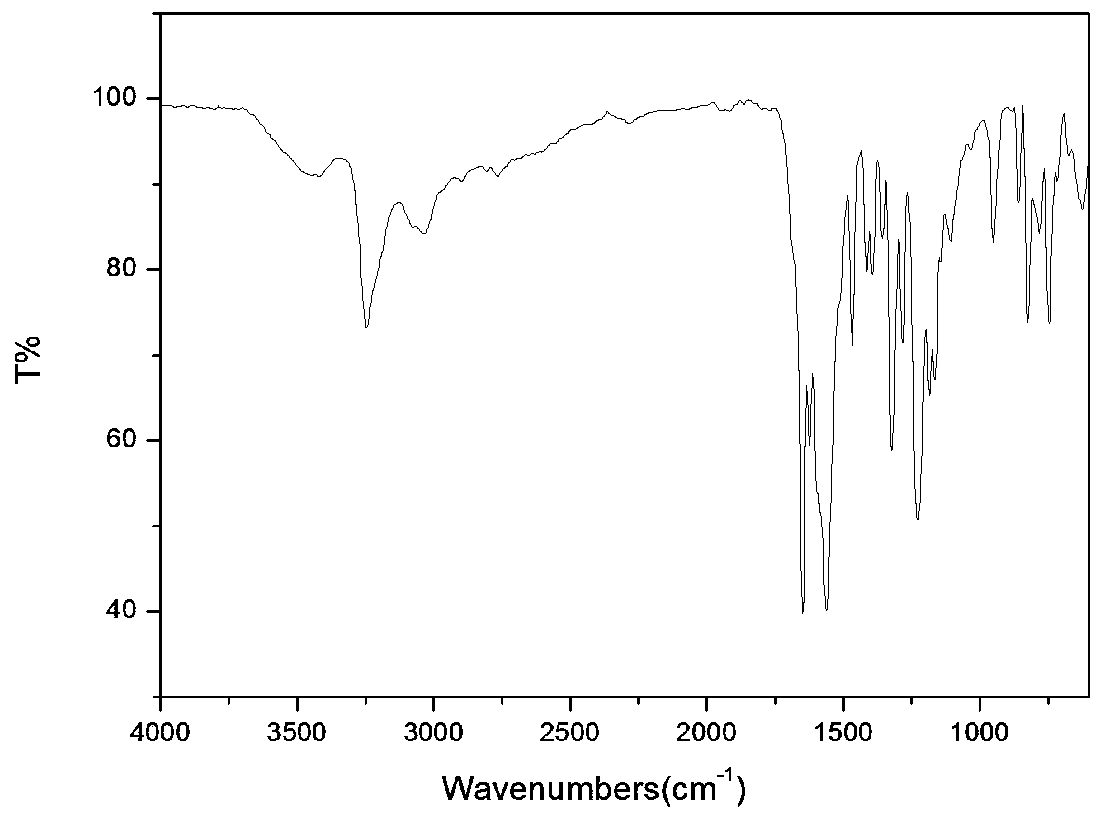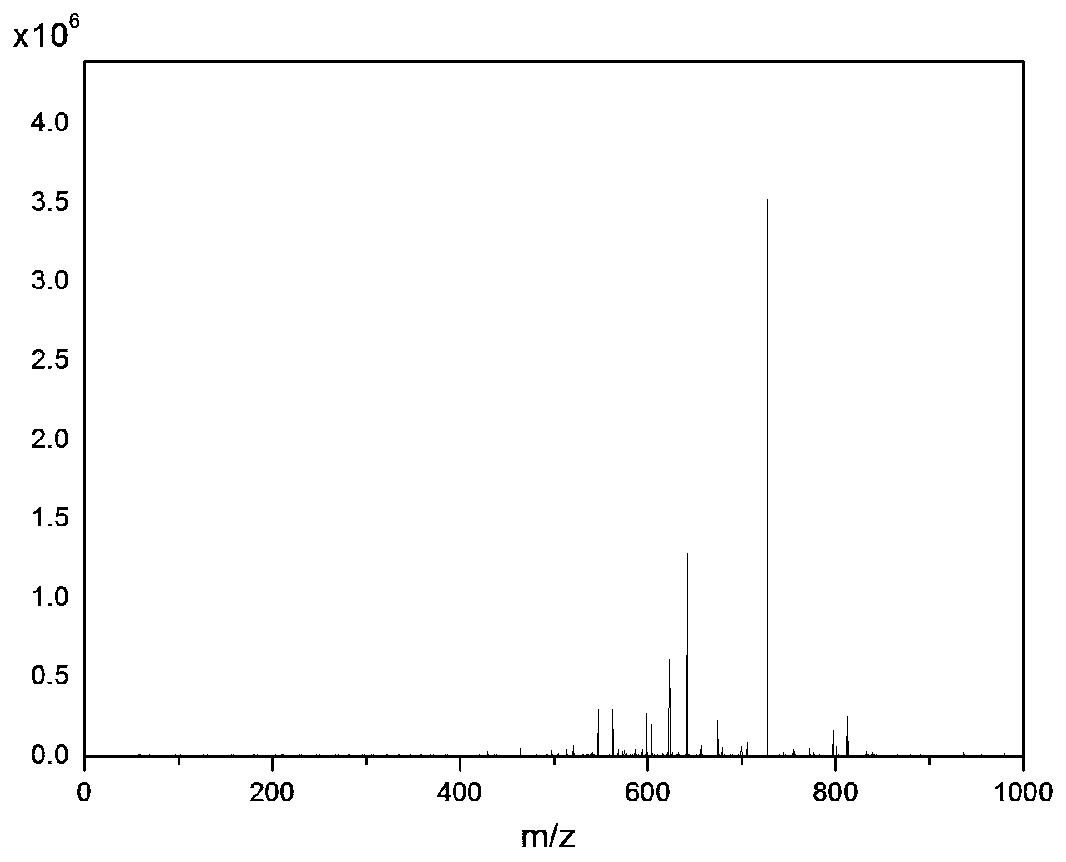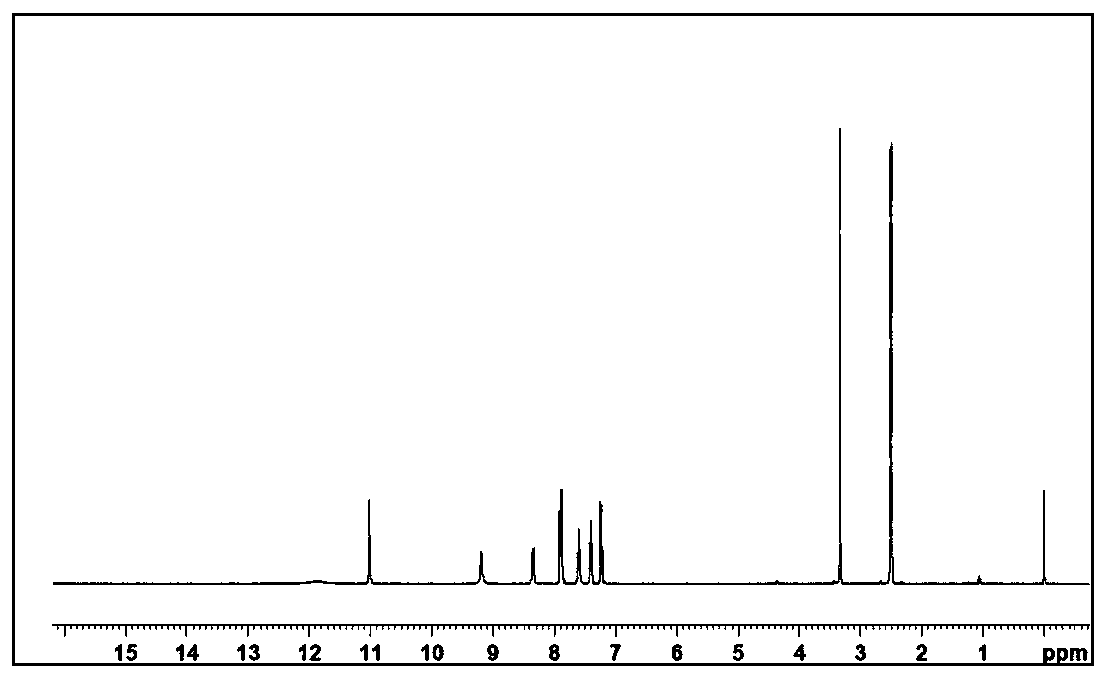Enhanced azo Salen Schiff base fluorescent probe and synthesis and application thereof
A fluorescent probe and enhanced technology, applied in the field of fluorescent probes, can solve the problems of large influence on reagent purity, large curve slope change, long reaction time, etc., and achieve easy control of reaction conditions, low detection limit, and simple synthesis method Effect
- Summary
- Abstract
- Description
- Claims
- Application Information
AI Technical Summary
Problems solved by technology
Method used
Image
Examples
Embodiment 1
[0037] Example 1 Preparation and Characterization of Enhanced Azo-Salen Schiff Base Fluorescent Probe
[0038] Synthetic azo compounds:
[0039] Dissolve 1.5318g (10mmol) of 3,4-dimethoxyaniline and 2mL of concentrated hydrochloric acid in a 100mL round bottom flask with 15mL of distilled water, and then weigh sodium nitrite (NaNO 2 ) 2.4835g (12mmol), stir well and control the temperature at 0-5°C, and react for 30 minutes.
[0040] Add 1.7218 g (10 mmol) of 2-hydroxyl-1-naphthaldehyde in ethanol solution dropwise to the above solution, stir for 3 hours, add sodium carbonate (Na 2 CO 3 ) aqueous solution to adjust the pH to 7-8, let stand, filter with suction, and recrystallize from absolute ethanol to obtain 16 g of yellow solid powder, yield: 81.26%.
[0041] Synthetic fluorescent probes:
[0042] Dissolve 2.6989 g (8 mmol) of the yellow solid and 0.3606 g (4 mmol) of dihydrazide carbonate in absolute ethanol, add 2 to 3 drops of concentrated phosphoric acid, and stir a...
Embodiment 2
[0051] Embodiment 2 Enhanced azo-Salen Schiff base fluorescent probe detection method for metal ions
[0052] Mix various metal salts (aluminum nitrate, cobalt chloride, zinc acetate, lead nitrate, manganese acetate, ferric chloride, magnesium sulfate, cadmium sulfate, copper nitrate, chromium chloride, high mercury chloride, nickel nitrate) into 1×10 -4 mol / L aqueous solution. The enhanced azo-Salen Schiff base fluorescent probe was dissolved in acetonitrile to make 5×10 -4 mol / L standard solution. The method for measuring the fluorescence intensity of metal ions to enhanced azo-Salen Schiff base fluorescent probes: add 0.1 mL of enhanced azo-Salen Schiff base standard solution and 5 mL of acetonitrile into the colorimetric tube, then add various metal ions respectively, and determine Make up to 10mL, and measure the fluorescence intensity after 3 hours of reaction. The fluorescence excitation wavelength is 440nm, and the slit width is 10nm / 10nm.
Embodiment 3
[0053] Embodiment 3 Enhanced azo-Salen Schiff base fluorescent probe pair Al 3+ selective identification of
[0054] In order to investigate the effect of the enhanced azo-Salen Schiff base fluorescent probe on Al 3+ The selectivity of different metal ions (Al 3+ 、Co 2+ , Zn 2+ , Pb 2 , Mn 2+ , Fe 3+ , Mg 2+ 、Cd 2+ 、Cu 2+ 、Cr 3+ , Hg 2+ 、Ni 2+ ) in the presence of enhanced azo-Salen Schiff base fluorescence probe fluorescence emission spectrum (metal ion concentration is 1×10 -5 mol / L), see Figure 4 .
[0055] Depend on Figure 4 It can be seen that when Co 2+ , Zn 2+ , Pb 2 , Mn 2+ , Fe 3+ , Mg 2+ 、Cd 2+ 、Cu 2+ 、Cr 3+ , Hg 2+ 、Ni 2+ , the fluorescence intensity of the system has no obvious change, when adding Al 3+ After that, the fluorescence intensity of the system is greatly enhanced, which shows that the azo-Salen Schiff base has a strong effect on Al 3+ Produced a clear fluorescent response and good selective recognition, which can be used as...
PUM
 Login to View More
Login to View More Abstract
Description
Claims
Application Information
 Login to View More
Login to View More - R&D
- Intellectual Property
- Life Sciences
- Materials
- Tech Scout
- Unparalleled Data Quality
- Higher Quality Content
- 60% Fewer Hallucinations
Browse by: Latest US Patents, China's latest patents, Technical Efficacy Thesaurus, Application Domain, Technology Topic, Popular Technical Reports.
© 2025 PatSnap. All rights reserved.Legal|Privacy policy|Modern Slavery Act Transparency Statement|Sitemap|About US| Contact US: help@patsnap.com



